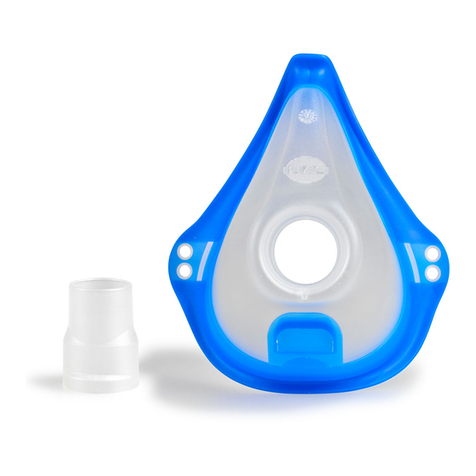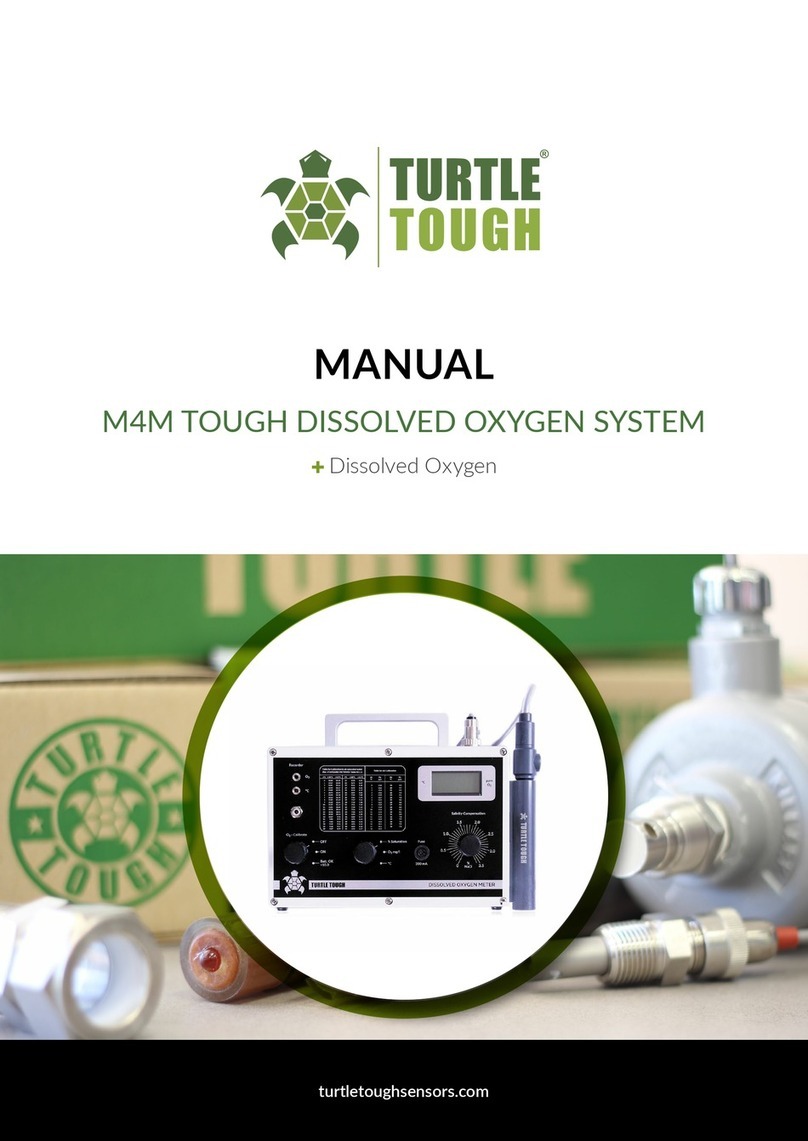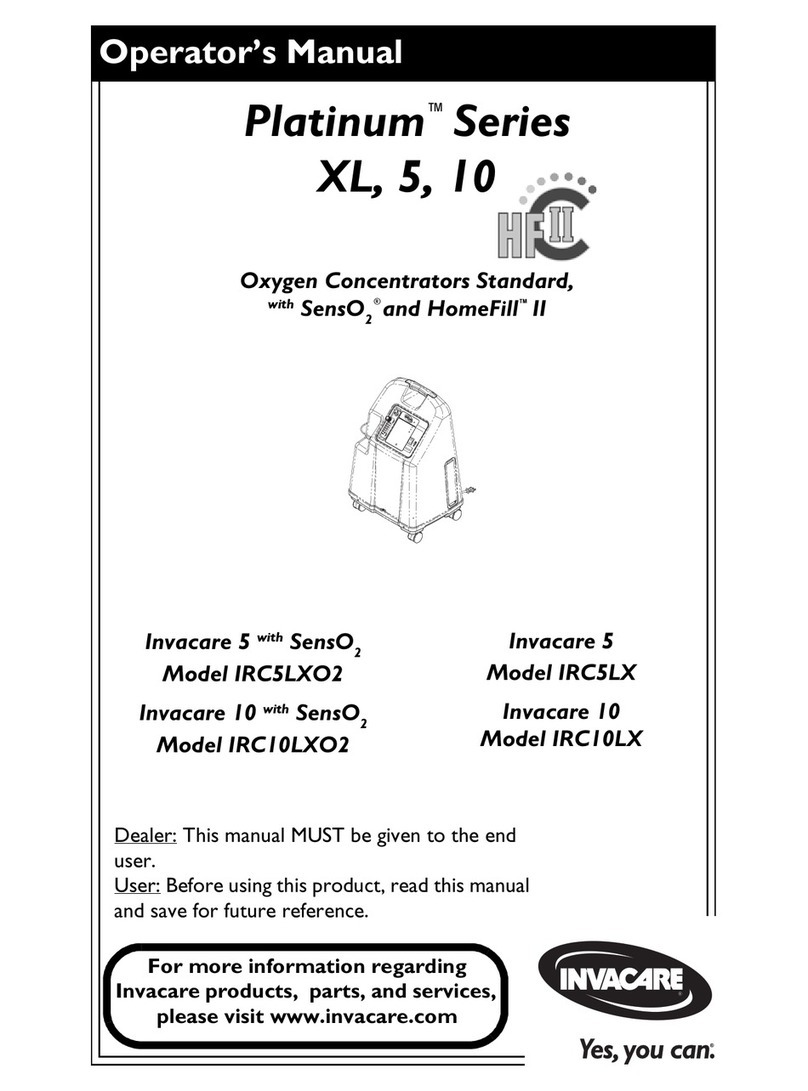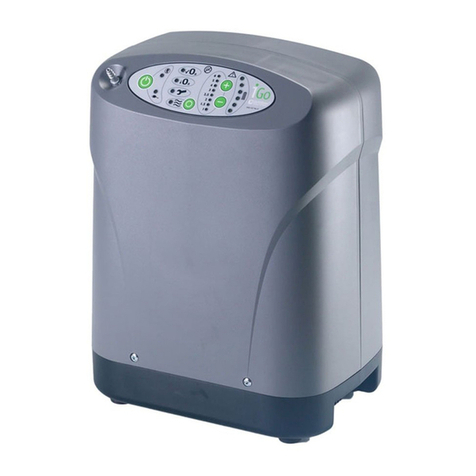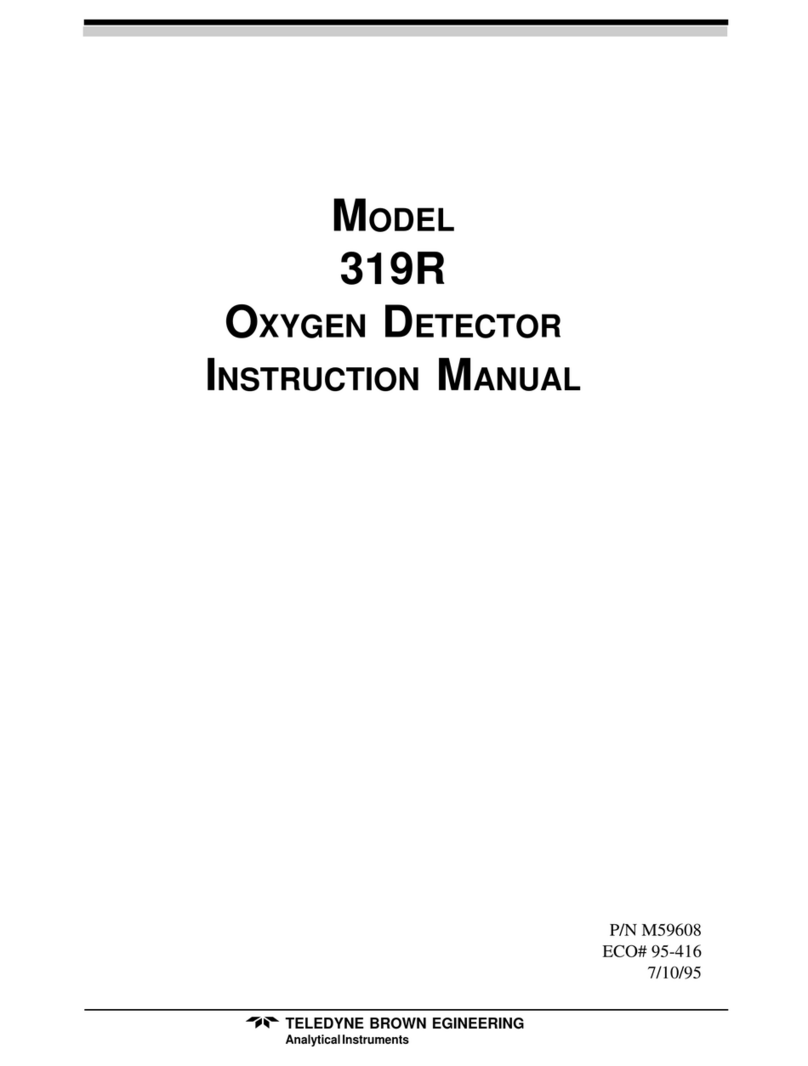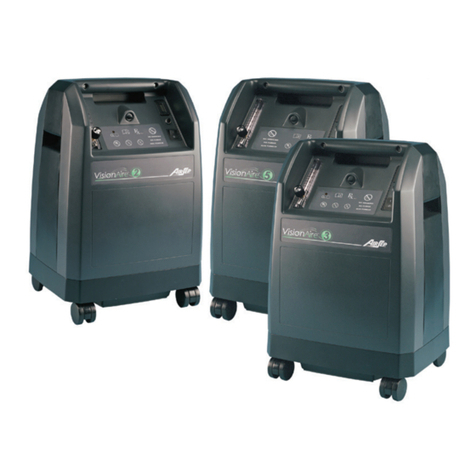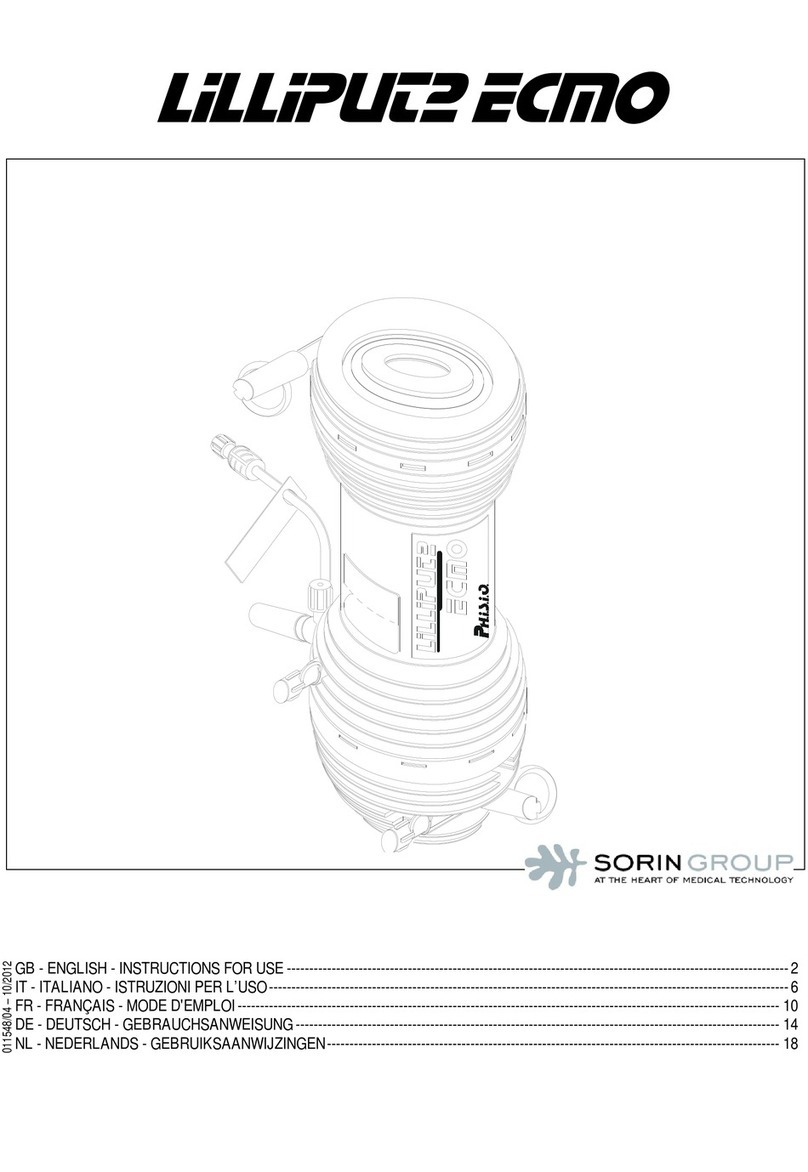INTERSPIRO DIVATOR MKII User manual

Divator MKII Face mask
Instruction manual

Contents
Special points 5
Technical description 6
Face mask 6
Low volume diving visor 6
Breathing valve 7
Breathing valve with positive pressure 7
Usage 8
Preparation 8
Donning 9
Removing the mask 11
Cleaning 12
Daily care: 12
Assembly after cleaning 16
Function test after cleaning 17
Inspection 17
Diving in low water and/or air temperatures 18
1. Breathing valve 18
2. Face mask 19
Repeated dives at air temperatures below +5°C 19
Surface supply (Hose diving) 19
Storage 19

4

5
Special points
The full-face masks are intended only for the use stated in this user
manual. Exceptions can be agreed only in writing.
Servicing, cleaning, maintenance and repairs require precise knowl-
edge and observance of the instructions for use in this manual.
Maintenance and repairs must only be carried out using Original
INTERSPIRO parts. Servicing, maintenance and repairs may only
be carried out by specialist personnel. Inspections must be carried
out at regular intervals by specialists and records of these kept. Care
must also be taken that the replacement intervals for the exhalation-
valve disc and the speech cone are adhered to.
INTERSPIRO offers maintenance contracts which via annual check-
ing, maintenance and, if necessary, repair of your breathing appara-
tus and masks guarantees that they are always in working order.
INTERSPIRO is not responsible for maintenance and repairs car-
ried out by third parties. Nor is it responsible for improper handling
or use. The guarantees and warranties by INTERSPIRO specified in
the conditions of sale are not extended by these “special points”.

6
If it is required to trim the mask to a neutral buoyancy,
weights are available which can be attached to locating lugs
(art. no. 336 190 854) on each side of the visor. See figure.
In addition the visor is closer to the wearer's eyes which
gives the user an increased angle of vision. The low volume
diving visor is suitable for use with any DIVATOR MK II
masks and is available as a retro-fit kit or complete assem-
bly.
LOW VOLUME DIVING VISOR
DIVATOR MK II is fitted with a low volume diving visor. The visor is designed
to minimise the volume of air inside the face mask and so reduce the positive
buoyancy effect. The sides of the visor are mat finished to avoid optical distor-
tions.
Technical description
FACE MASK
The DIVATOR MKII face mask has been tested in accordance with EN 250.EC
Type-examination (Directive93/68/EEC)by SGS Yarsley ICS Ltd,East Grinstead,
West Sussex, RH19 1 ET, UK (Notified body No 0120).
The mask with inner mask is made of rubber and provided with a flat visor. The
mask has holed studs for fitting spectacles. In the connection piece for the breath-
ing valve there is space for a microphone to a diving telephone. (When fitting a
microphone a cover with long screws should be used.)
The rubber head harness has five straps that are tightened and locked by stain-
less steel buckles. The wide and soft sealing edge of the mask is pressed lightly
against the face by the positive pressure and follows the contours of the face
giving an effective seal.
Inhalation and exhalation air will never be mixed because of the separate inha-
lation and exhalation channels. In this way rebreathing of carbon dioxide en-
riched exhaled air is eliminated.
During inhalation air flows from the breathing valve up through the demister
ports over the inside of the visor preventing any condensation from forming, and
on through the non-return valves into the inner mask.
During exhalation the air is expelled to the ambient water through the exhala-
tion valve.

7
BREATHING VALVE
The breathing valve is of the demand type i.e. air is only supplied during inhala-
tion.
Owing to the balanced valve function the breathing resistance can be kept ex-
tremely low, in spite of variations in the secondary pressure which may occur
e.g. in connection with surface supply diving.
In the inhalation channel there is a one way valve to prevent water from pen-
etrating into the valve mechanism where it could freeze and cause the valve cone
to stick in the open position.
Note! The breathing air shall meet the requirements for breathable
air according to EN 132, Annex A.
Note! It is very important that the breathable air is clean and dry.
Note! Do not use oxygen or oxygen enriched air.
Breathing valve with positive pressure (for use in contaminated water)
The valve is designed to give a slight positive pressure of approximately 200 Pa
(20 mm water column) in the mask. The positive pressure (safety pressure) is
turned on automatically when the user takes his first breath in the mask. This
ensures that there is no way of forgetting to turn on the positive pressure or that
it could become accidentally turned off.
The positive pressure reduces the risk of water inleakage (which is very impor-
tant when diving in contaminated water) and the positive pressure in the mask is
maintained irrespective of the diver's momentary air consumption. But if water
should still have penetrated, the mask is easily drained by pushing the purge
button of the breathing valve.
When the mask is taken off the black lever on the breathing valve should be
turned in against the valve housing. The breathing valve will then be shut off.

8
Usage
PREPARATION
1. Connect the breathing valve to the
mask by pushing the valve into the
connection piece and by turning it
anti clock-wise so that it grips in
the bayonet coupling.
3. Connect the breathing hose to the
breathing valve and tighten the
union nut by hand.
2. Lock the breathing valve in posi-
tion with the cover which should
be pressed on and the screws tight-
ened by hand. If needed the O-ring
should be lubricated with a thin
layer of lubricant 331 900 269.

9
DONNING
1. Adjust the pressure equalizer pad
to a position which permits easy
breathing through the nose.
2. Pull out the head harness straps as
far as possible and put on the face
mask
3. Tighten the head harness straps
moderately.
Note! Always pull down the head harness as far as possible at the
back of your head and tighten the lower straps first to counteract the
buoyancy of the mask.

10
4. If necessary, pressure equalize by
pressing the breathing valve up-
wards.
4. Check the positive pressure by
holding the breath and inserting
two fingers between the sealing
edge and the face; a strong air flow
should be heard.
4. Inhale deeply to turn on the posi-
tive pressure automatically (alter-
natively press lightly on the purge
button, see figure). Stop breathing
and listen for any leakage. If there
is a fitting leakage check that hair
has not come between the mask and
the face and adjust if necessary the
head harness.

11
REMOVING THE MASK
1. Unlock the buckles and loosen the
head harness.
2. Turn off the positive pressure by
pressing the black lever on the
breathing valve towards the valve
housing. See figure.
3. Remove the mask.

12
CLEANING
Daily care:
1. Immerse the face mask and the breathing valve into clean water.
2. Remove the mask and the breathing valve from the water.
3. Press the purge button and allow the air to flow through the valve until the
valve is dry and loose dirt removed.
Note! Should the breathing valve have been removed from the face
mask the non-return valve may fall off while you rinse it.
After prolonged use or when the apparatus is very dirty the following procedure
should be carried out by a person authorized by INTERSPIRO:
1. Close the cylinder valve and switch
on the positive pressure.
2. Unscrew the medium pressure hose connection.
3. Remove the cover by unscrewing the two screws and pulling the cover off.
4. Turn the breathing valve clock-wise so that it comes away from the bayonet
coupling and pull the valve outwards.

13
5. Dismantle the breathing valve in
the following way:
a) Unscrew the locking ring and re-
move the positive pressure unit
from the valve housing.
b) Seal off the connection nipple and
the inlet channel with rubber plugs.
c) Hold the positive pressure unit and
loosen the diaphragm assembly by
squeezing the thread of the cover.
Separate the components carefully.

14
e) Remove the positive pressure
spring and the guide disc from the
positive pressure unit cover.
d) Remove the sealing disc and the
exhalation diaphragm from the dia-
phragm assembly. Do not disman-
tle the diaphragm assembly any
further.
e) Remove the protective ring from cover if necessary.
Further dismantling of the breathing valve should only be carried out by
an authorized service man.
If sand or dirt has penetrated into the valve the valve insert should be dis-
mantled completely and cleaned by an authorized service man. The setting of
the valve could in this case alter and the valve should therefore be tested with
a test equipment before being put to use again.

15
6. Wash the face mask and the breathing valve dismantled as described above.
Use soap and warm water (maximum 40 °C). Scrub with a brush if necessary.
Instead of soap a detergent can be used.
Note! Strong detergents should be avoided as these may damage rub-
ber and plastic materials.
7. Rinse the parts in clean water after cleaning.
8. It is sometimes necessary to disinfect the mask and valve after use.
After cleaning and rinsing leave the parts, except the valve insert, in a 0.1%
solution of chlorhexidine (Hibitan ICI) for one hour. (Chlorhexidine can be
obtained from any chemist. ) Rinse the parts carefully in clean water.
9. Let the parts dry. Temperatures higher than 50ºC must not be used for dry-
ing.

16
ASSEMBLY AFTER CLEANING
1. Check that the rubber parts are supple and without cracks or other defects.
Damaged parts should immediately be replaced. Any repairs to the breathing
valve should always be followed by a function test on the test equipment.
2. All the parts should be completely dry before reassembling.
3. Lubricate the exhalation diaphragm with a thin coating of lubricant
331 900 269. Lubricate the edge of the diaphragm where it seals against
the sealing disc and also the corresponding area of the disc.
If needed the O-rings should be lubricated. Lubricant can also be applied to
the groove for O-ring in order to keep the O-ring in place.
4. Place the guide disc with the positive pressure spring in the cover.
Note! Do not straighten the spring. The slight bend is intended.
5. Push the diaphragm onto the diaphragm assembly, making sure that the
centre is pressed well down on the guide pin.
Note! The sealing edge should lay flat against the valve seat.
6. Assemble the sealing disc and the diaphragm assembly. Check that the
sealing edge of the diaphragm and the edge of the sealing disc are even
and clean.
7. Lubricate if necessary the sealing edge and the sealing area of the sealing
disc with lubricant 331 900 269.
8. Place the diaphragm assembly on top of the positive pressure spring (the
sealing disc has a guide groove for spring). Push the diaphragm assembly
down into the positive pressure cover without twisting it as the spring
tension could be altered.
9. Check that the unit is working correctly by pressing down lightly the guide
pin a few times. The diaphragm assembly should move freely.
10.Place the locking ring on the valve housing and screw the positive pressure
attachment on to the valve.
11. Assemble the breathing valve and the face mask and screw on the cover.

17
FUNCTION TEST AFTER CLEANING
1. Connect the breathing hose to the breathing valve and push the lever to the
off position (i.e. against the valvehousing). Open the cylinder valve. No flow
of air should be heard. A flow indicates a leakage.
2. Turn on the positive pressure briefly. A strong flow of air should be obtained.
If not, the valve has been wrongly assembled and should be adjusted and test
repeated.
3. The automatic positive pressure can be checked by putting on the face mask
and checking that the positive pressure is switched on automatically by the
first inhalation. Turn off the positive pressure and take off the mask before
exhaling. Wipe the sealing skirt of the face mask with disinfectant.
Alternatively the test equipment can be used to test the automatic positive
pressure and other functions. See separate instructions supplied with the test
equipment.
INSPECTION
Inspect the rubber parts, the plastic parts, the non-return valves in the inner
mask and the head harness at regular intervals. A diving apparatus should un-
dergo a complete function test at least once a year, even if it has not been used.
These tests are carried out on a test equipment.

18
Diving in low water and/or air
temperatures
Colder environments always involve greater risk of freezing in a breathing ap-
paratus. We recommend the use of the full-face mask at low temperatures be-
cause it provides better protection for face against cold. It is also physiologically
correct because the inhalation air is warmed and moistened in the nose.
Freezing may cause more serious operating problems but this can be prevented
by following the simple measures described in the following instructions.
Below is a short summary of how the main components of the apparatus may
react at low temperatures.
1. Breathing valve
The breathing valve functions on the demand principle, i.e. air is only supplied
during inhalation. When the diver inhales, air flows from the breathing hose
through the breathing valve and into the diver's lungs. The expansion of the
supplied air means that the breathing valve close to the inlet is cooled to around
-12°C at a water temperature of 0°C. Possible moisture in the inlet section of the
breathing valve will then become ice which could increase the friction between
the moving parts of the valve mechanism so much that the return springs would
not be able to close the valve at the end of each inhalation. In such cases the
diver gets a free flow situation, i.e. there is a continous flow of air through the
breathing valve and mask and out via the exhalation valve.
To prevent moisture accumulation a non-return valve has been inserted in the
passage between the inlet section of the breathing valve and the mask.
In spite of this moisture may enter the inlet section of the breathing valve in the
following ways.
a) After washing in water if the breathing valve has not been properly dried.
b) The non-return valve is not leaktight.
Check that the breathing valve is functioning properly by turning on and off the
safety pressure. There must be no air flow after the safety pressure has been
turned off. Also check that the non-return valve seals against its seat.
At low outside temperatures there is a risk for ice in the breathing valve if it is
not completely dry. This is especially important as far as the valve insert is con-
cerned. Use dry, clean air, for example from the cylinder pack, to blow dry.
Silicon sprays or other products not approved by us must not be used to keep out
moisture, such products may be harmful to the material or cause allergic reac-
tions.

19
2. Face mask
The face mask has been developed in order to protect the diver's face against
cold and to make it possible to warm and moisten the breathing air on its way
through the nose before it reaches the lungs. The DIVATOR MK II full-face
mask has completely separated inhalation and exhalation channels. This means
that moisture from the diver's exhalation can not pass over to the inlet section of
the breathing valve, neither through the mask channels nor through the valve
mechanism. These features reduce the risk of freezing significantly. However,
the breathing valve must be dry to start with.
Put on the mask before you enter the water. Check that the mask makes a tight
seal against the hood/face. A leaking mask means a continous flow of air with a
cooling effect and increased risk of feezing if the breathing valve is not dry.
Repeated dives at air temperatures below +5°C
To prepare for the next dive shake the mask to remove remaining water.
Put on the mask and push in the purge button and let the air flow through the
valve a few seconds.
Place the mask in a dry place with the visor facing upwards to prevent water or
snow entering.
Shake off water from the reserve air valve and place it away from water or snow.
Surface supply (Hose diving)
When surface supply diving in winter conditions make sure that there is no
water in the hose before the diver enters the water.
Make sure that the diver receives the correct supply pressure so that the mask
does not free flow.
Storage
All parts of rubber or containing rubber components should be stored in a cool,
dry and dark place and in a sealed plastic bag.

20

21
Other manuals for DIVATOR MKII
1
Table of contents
Popular Oxygen Equipment manuals by other brands

Invacare
Invacare Perfecto2 IRC5PO2 user manual
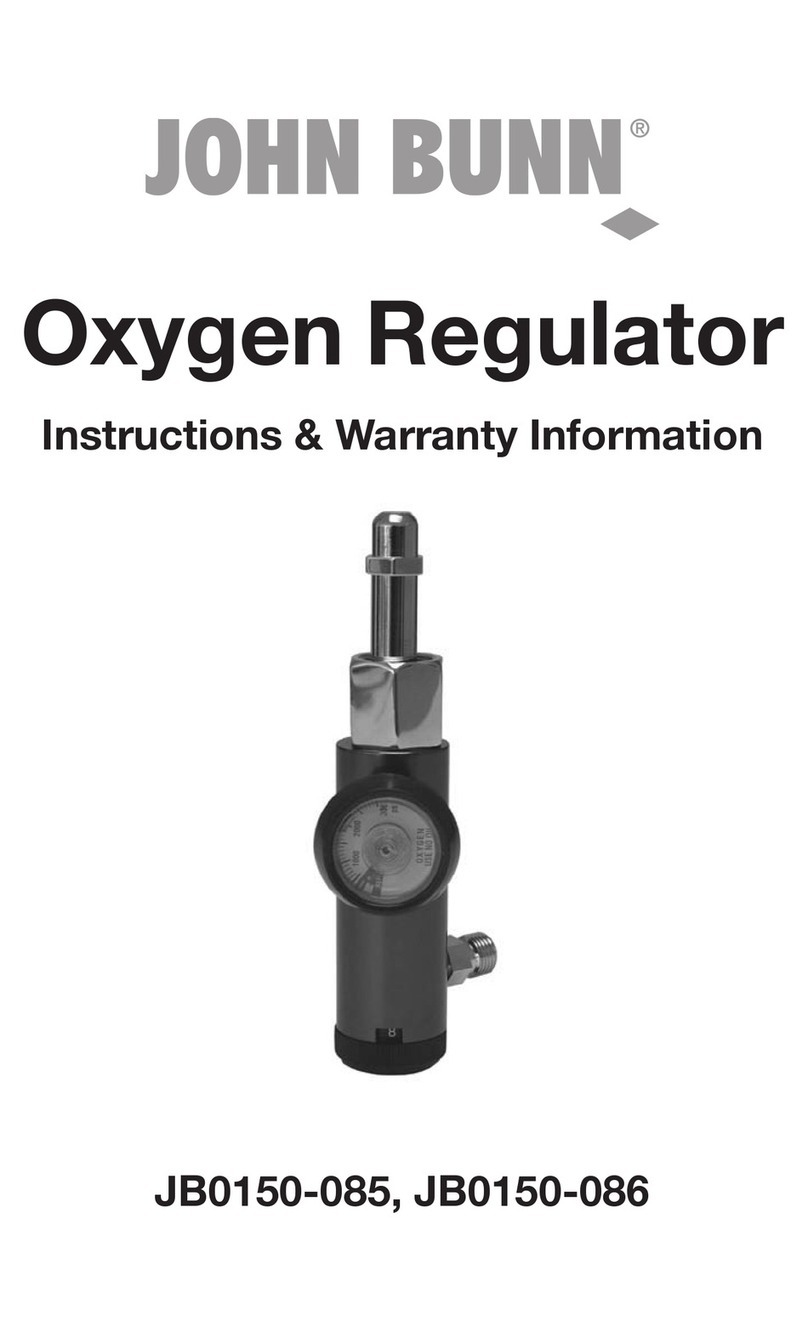
John Bunn
John Bunn JOHN BUNN JB0150-085 instructions
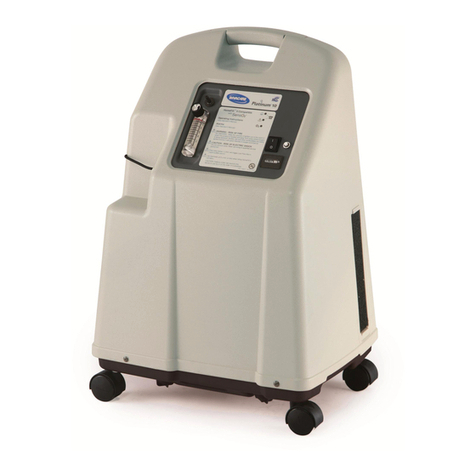
Invacare
Invacare Platinum IRC5LXAW Service manual
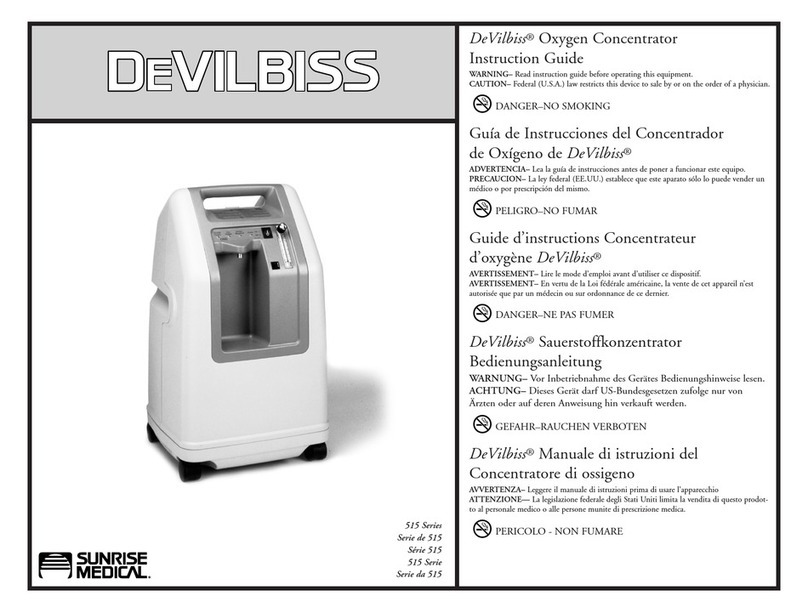
DeVilbiss
DeVilbiss 515A Series Instruction guide
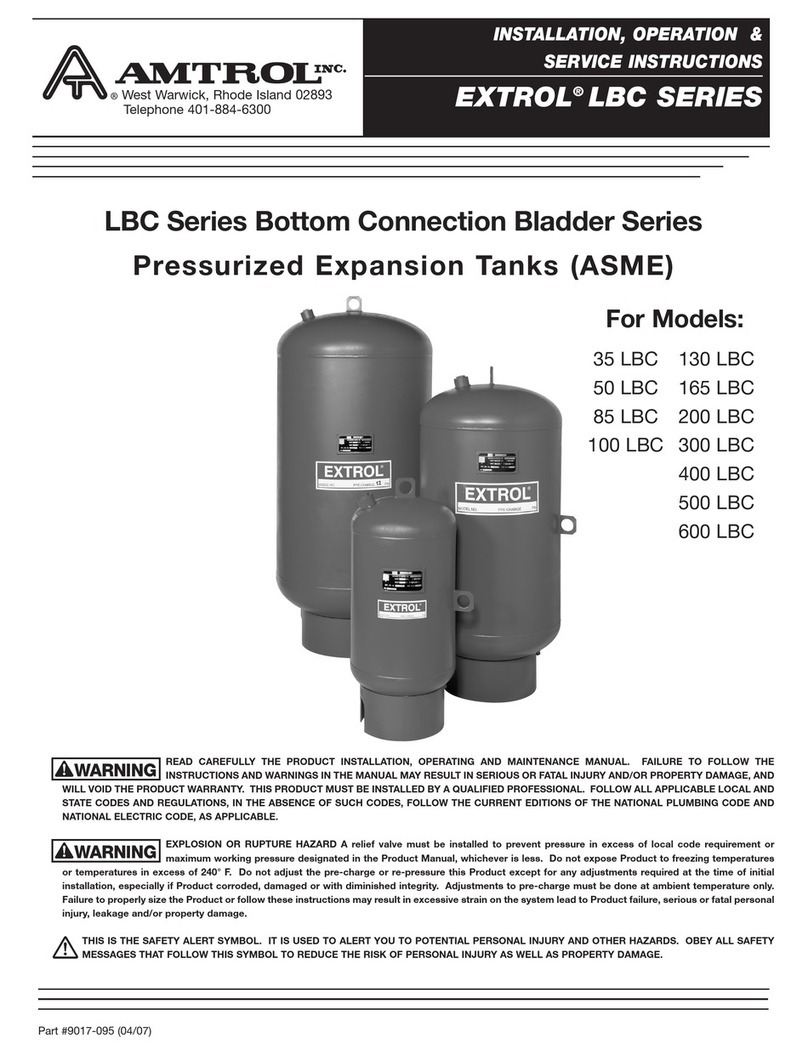
Amtrol
Amtrol EXTROL 100 LBC Installation & operation instruction
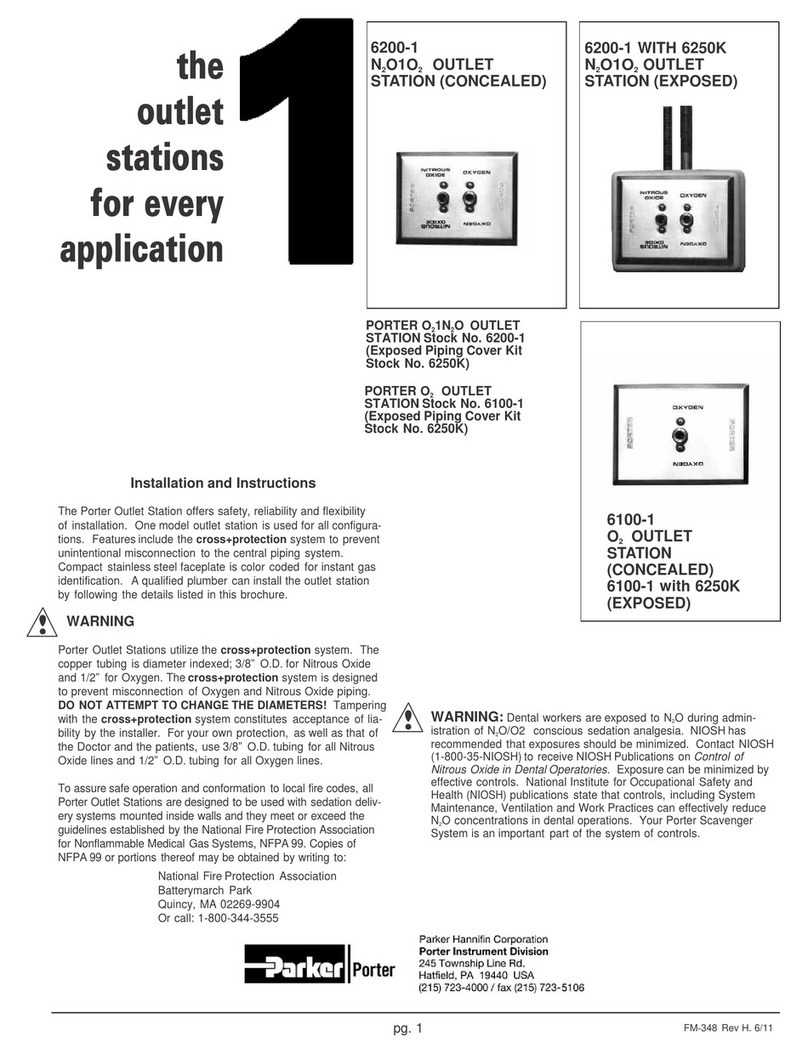
Porter
Porter 6200-1 Installation and instructions
